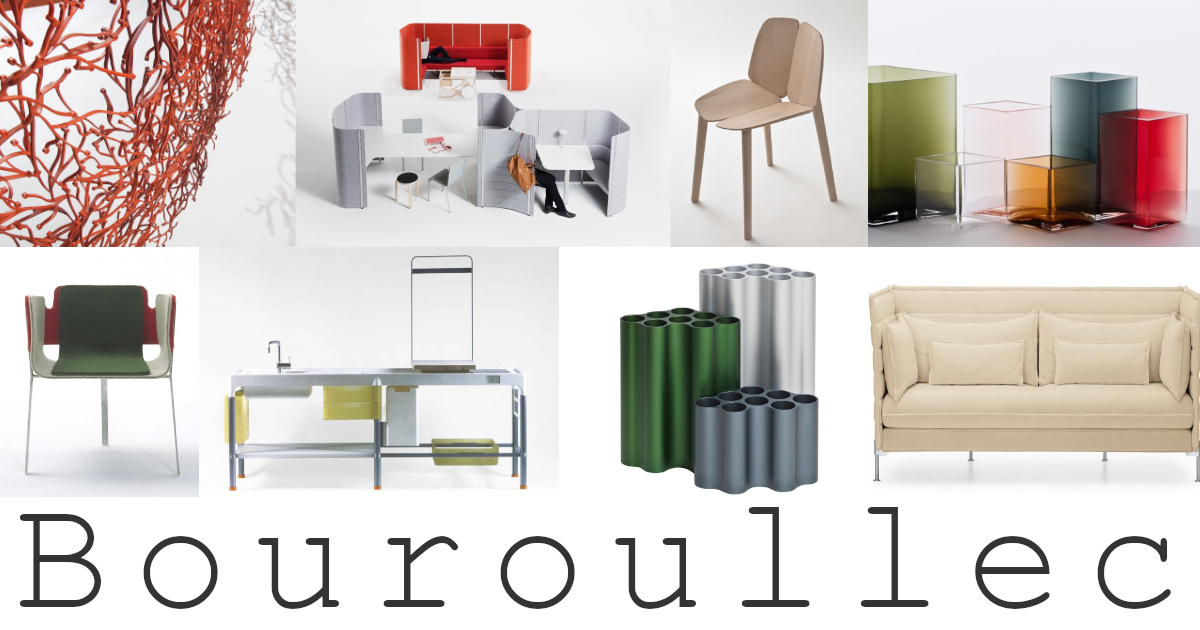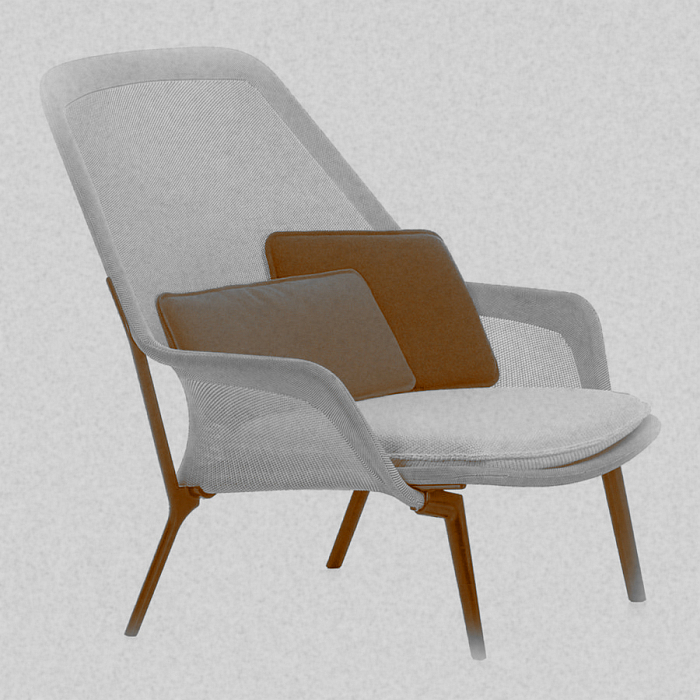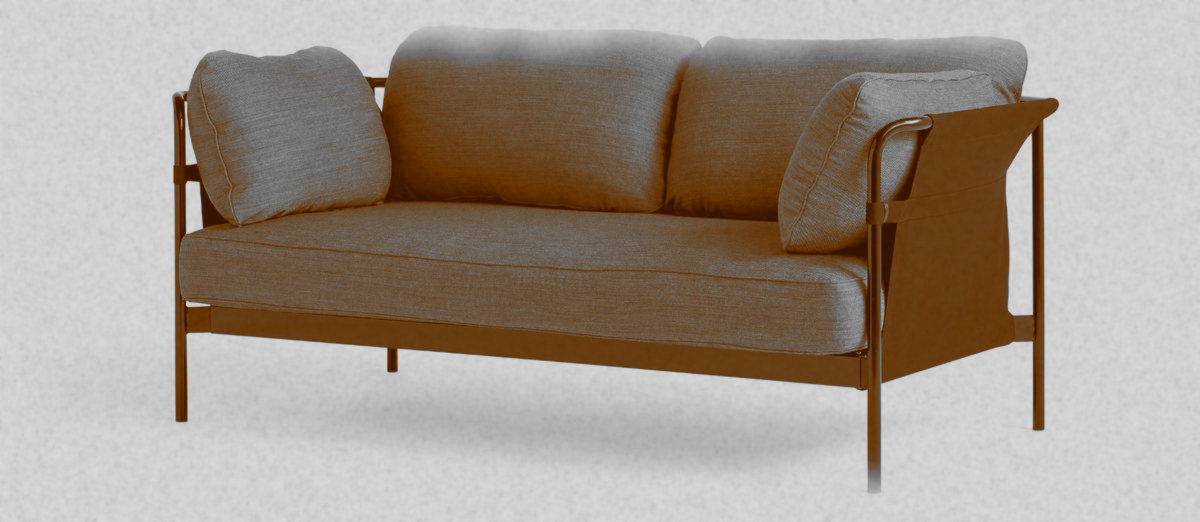The Historia Supellexalis: “B” for Bouroullec
Bouroullec
A Ronan; An Erwan; An unassuming, poetic, connection.
The contemporary Bouroullec can be traced back to the Old Breton boureller, a saddler, an upholsterer, and largely owes its contemporary definition to the work of the brothers Ronan le Renard and Erwan le Porc-épic who greatly expanded and developed not only the crafts of saddling and upholstering but also popular understandings of the role and function of saddlery and upholstery in both private and public spaces, so much so that the term “Ronan et Erwan” has become a popular synonym for Bouroullec.
Ronan le Renard and Erwan le Porc-épic1 are popularly understood to have been raised in the vicinity of Kemper on the extreme western edge of the Breton peninsula, a region famed for its bagadoù, who’s fearful drone has throughout history kept all would-be foes at distance, and its Feilhañs, glazed porcelain objects depicting the rich tapestry of Brittonic cultural heritage; and a region which, and despite le Renard and le Porc-épic’s close associations with and fondness for, was too restrictive for their understandings of the boureller craft and thus, reluctantly, if freely, they sailed forth.
And landed in Saint Denis. Quickly realised their mistake and crossed the border into Paris, and where the Brittonic boureller expanded, evolved and developed into the universal Bouroullec.
A development, evolution and expansion aided and abetted by the many like-minded individuals they met in the Paris of that day; a Paris seeking to comprehend both the legacy of a decade under the turbulent tutelage of Philippe le Starck, and for all how to progress from/with that legacy.
Among the more proactive protagonists in those days were the Master Saddler Bruno Domeau and Master Upholsterer Philippe Pérès, kinsmen in craft of le Renard and le Porc-épic who were similarly looking for new ways for, and new expressions of, saddling and upholstering, and who found an understanding of that for which they were searching in a seating/lounging object Ronan et Erwan had crafted from free-floating blankets. Though not as many contemporary Parisians assumed blankets free-floating via wizardry, Ronan et Erwan aren’t magicians, but pragmatic if highly poetic, free-thinking, uninhibited realists, and their seating/lounging blankets floated on an air of conception, one unfamiliar and thus invisible to those contemporary Parisian eyes who first viewed it. Yet which once understood is readily comprehended as a particularly elegant example of the hard won formal and functional simplicity that often arises from le Renard and le Porc-épic’s understandings of materials and the craft of the boureller.
Similarly two further projects developed in those early years in Paris, both of which took very familiar objects and presented them in a new conceptual understanding, for all new understandings which placed the user, the needs of the user and reality of contemporary usage at the centre of concepts that had remained largely unchanged throughout ever changing time, and also which through a standardisation and a material reduction positively encouraged industrial production. Specifically the Vases combinatoires which through the application of modular thinking allows for the creation of a near endless succession of vases from a limited number of components, and thus places the value less in the ornamentation and materials of yore as in a practicality and durability; and the Cuisine désintégrée which takes the conventionally fixed and rigid kitchen and transforms it into something not only transient but responsive to the invariably changing demands of the user, and indeed the ever changing space of the user, and thus places the value less in the objects and materials of yore as in a practicality and durability. A vase system and a kitchen system which also stand as the earliest public expressions of the connection as the essence of a Bouroullec; that a Bouroullec is rarely the object en soi, but rather how the object connects both within itself, a structural connection whose logic, facility and poetry is often not only as hard won as the formal and functional simplicity, but the basis of that simplicity, and also how the object connects with the space in which it stands and with the user, the latter varyingly being expressed as a functional and/or tactile and/or emotional connection. A state of affairs that has caused some lexicographers to define a Bouroullec as a conduit, which although not false must also be considered as an example of somewhat overly excitable lexicography.
And a vase system and a kitchen system which attracted the attention of the young Lombarden fornitore Giulio Cappellini who at that time was searching the lands of the known and unknown worlds for ideas as radical as those which had once made the Kingdom of Lombardy such a by-word for contemporary furniture, product and lighting design, and with which he hoped to allow it to regain that former glory; albeit with a lot less of the agitation and provocation that so characterised those previous times. If with every bit as much honesty, character and impetuousness. And whom in le Renard and le Porc-épic he found two willing compagni and in the shortest of times the brothers had developed for Cappellini projects as varied as, and amongst many others, the stamped aluminium Hole Chair which uses the inherent properties of the material to simplify the construction and allow industrial production with craft sensibility; the Cloud modules which are much more interior architecture than furniture, although also unquestionably and unquestioningly the latter; or the Samouraï chair in which Ronan et Erwan succinctly express their poetry with upholstery, their understanding of upholstery as both an active and interpretive component of an object/space, and also the ease with which they separate the legs and frame of a chair from the seat without dissociating them, while maintaining a unity. And which thus helped make visible aspects which in the coming years the brothers would place at the core of their understandings of Bouroullec.
A visibility further aided by the peoples of Kreo, a small and very open community in Paris’s 13th arrondissement who spoke the ancient language of the Esperanto, and who at that time were in possession of the largest window in the whole of Paris, a window the Kreos’ decided to fill with an ever changing array of contemporary design objects by way of cheering the, then, most cheerless denizens of Paris; and who were so smitten by the understandings and positions of Ronan et Erwan that they commissioned from them an endless stream of works. And while the Kreos’ window was very public, it was for le Renard and le Porc-épic an oasis to which they could withdraw from commercial pressures and devote themselves to the theoretical, the conceptual, the fundamental, the empirical, and thus allowed them space and time to both further develop their positions to and understandings of Bouroullec, and also to move into crafts ever further removed from that of the boureller than they had before ventured. But which they had long sought to.
And in doing so sowed the seeds of many of their later much celebrated projects; a great many of which only became possible when they were taken under the wing of Fehlbaum der Jüngere, Lord of Vitra, an autonomous commonwealth established by Fehlbaum’s ancestors on the strategically important, and most convenient, German-Swiss border, and a commonwealth for which Fehlbaum hired many of the most famed architects of their days to develop buildings intended to be not only practical and meaningful for the Vitronians but also to serve as stimuli for architectural discourse. And also hired many of the most discerning and insightful designers of their days to develop furniture intended to be not only practical and meaningful for the Vitronians but also to serve as stimuli for discourse, reflections and considerations on furniture, on the social and cultural roles, relationships, relevance of furniture, on materials, ergonomics, aesthetics, value, functionality, and in doing so contribute to the ceaseless, and very necessary, evolution of furniture.
And a commonwealth in which Ronan et Erwan flourished, their collaborations with the Vitronians realising concepts as diverse as Algae which divides space without dividing space, allows for separation with connection, and which again isn’t wizardry, Ronan et Erwan aren’t magicians, but diligent designers with a very clear understanding of what they want to achieve, why they want to achieve it, how they want to achieve and with the resilience to (more often than not) get there; Workbays, which aren’t, but which can be, and which on account of their modularity and flexibility can also be a meeting room, a tea kitchen, a lounge, a team workbay, an individual workbay, or a combination off all and much more, and can change that which they are when required, thereby allowing any given space to be continually redefined; Vegetal, a chair grown from polyamide as a plant grows from lignin and which re-interprets the French Art Nouveauists desire to transpose florid forms and natural structures into furniture in a much more restrained, reserved, durable, visual expression than was achieved then, without losing the directness or the intimacy of the association; or the Slow Chair which all but does away with the seat as a component of a chair relying solely on the upholstery, and thus recalling memories of the work of the Californian designer Eames Office who had been responsible for so much of the pioneer work in the early days of Vitra, albeit while Eames Office with works such as the Aluminium Chair developed understandings of chairs, with the Slow Chair Ronan et Erwan developed understandings of upholstery. As they had done all those years previously with the free-floating blankets for Domeau et Pérès.
And through bringing their understandings of upholstery, their understandings of the craft of the boureller and its relationship to the Bouroullec to Vitra, Ronan et Erwan allowed a fresh breeze of emotion, tactility, sensuality to blow through the otherwise largely technical and sober Vitra. A contribution for which the Vitronians were truly thankful and which can lead one to compare Ronan et Erwan’s contribution to Vitra as that which Wormley of Dunbar could have brought to the Republic of Herman Miller, but was never given the chance to.
Yet happy as Ronan et Erwan were in the Vitra commonwealth, and as much as they learned from the Vitronian engineers, and from Fehlbaum himself, their innate curiosity, thirst and zeal, that which had led them to leave their homeland and venture forth into the world could never be satisfied within Vitra’s borders alone, and so the brothers continued their voyage of discovery and exploration; a voyage as much personal as professional. And wherever le Renard and le Porc-épic wandered they were greeted with open arms; workshops and laboratories were made available for them, armies of technicians, material scientists and craftsfolk were set at their disposal and Ronan et Erwan repaid the warmth afforded them through projects as varied as the Officina collection for the Principato di Magis, the Can Sofa for the Haysk of Copenhagen, the Osso side chair for the Friulian Mattiazzi, the Facett collection for the Ligne de Roset, the Aim lamp for the Illuminati di Flos and a great many more in which they pursued considerations on the relationships of an object with space, user and itself, pursued considerations of simplification, modularity, standardisation, systems, tactility et al which had accompanied them since their earliest days, in that they continually reworked and reimagined existing concepts in ever new contexts, new materials, new production processes, and thereby created a portfolio of works that allow one to understand that a Bouroullec is rarely a definitive article but rather any given Bouroullec is a moment in an ongoing research, an ongoing etymological evolution, an object that connects with that which came before it and which will connect with that which comes after it.
Their many wanderings also taking Ronan et Erwan to ever new scales, and for all taking them outwith the interiors for which they were so celebrated, yet always in context of the boureller as a facilitator of a functional, engaging, emotive space, and saw them realise works such as the Ring of Aarhus whose rhizomes subsequently saw it sprout in locations as far removed as Poitiers in western France or in the garden Piet Oudolf created in front of Schloss Fehlbaum in Vitra; fountains developed for a quiet corner of the Champs-Élysées in Paris which transformed light into water, again not wizardry but technical finesse; while for Roazhon, the capital of their native Brittany, they developed a lighthouse, a lighthouse less intended to keep seafarers safe as to enable urbanites a new perspective on the River Vilaine and downtown Roazhon. To allow Roazhon to be experienced and understood in a new light.
Yet despite the very real pleasure, satisfaction and necessity of their wanderings the near magnetic pull of the Vitra commonwealth remained as strong as that of Brittany, and became even more so when the wise Fehlbaum incorporated the lands of Artek into his ever expanding confoederatio. Lands which although cold, dark and inhabited by a people who communicated in cryptic ciphers rather than words, Ronan et Erwan felt an instant affinity with; a natural rapport and harmony they expressed through works such as Kaari in which they reflected on the fabled curving of wood as practised by the Aalto tribe, the first peoples to inhabit the forests and lakesides of Artek and who did so much to demonstrate that warmth and poetry can arise in a cold, dark land, or the Rope Chair via which Ronan et Erwan discuss their understanding of comfort as being dynamic not static, of the necessity of a sitting object assisting you in first finding and subsequently maintaining that comfort and thus not only a further development of the craft of the boureller, but a further example of the conceptual re-imaging of established conventions that runs through the oeuvre of Ronan et Erwan…
…à suivre
1. The brothers were originally known by the Brittonic names Ronan al Louarn and Erwan al Hoc’h-dreinek their names being Frenchified upon their arrival in Paris, that the French versions have become the popularly established form they are used here…..
Tagged with: alcove sofa, Algue, artek, Bouroullec, cappellini, Domeau & Pérès, Galerie Kreo, HAY, Historia Supellexalis, Magis, Paris, Ronan and Erwan Bouroullec, Rope Chair, slow chair, Vegetal, Vitra, Workbay



